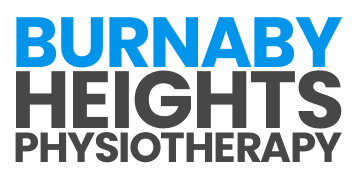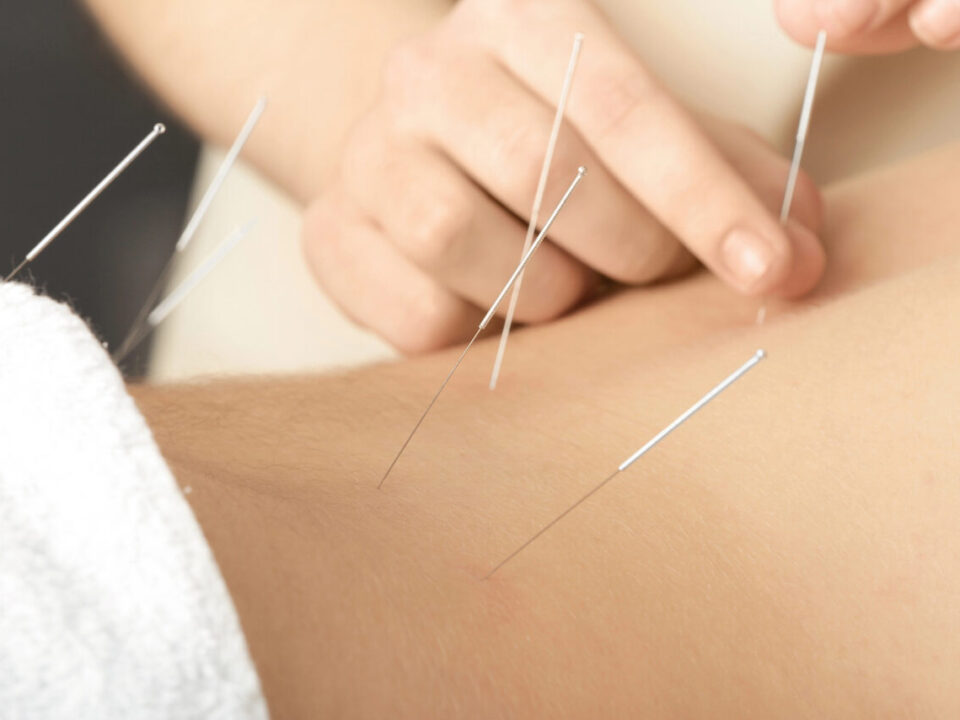
Embark on a Journey of Healing: Exploring the Benefits of Acupuncture
July 18, 2024
Empowering Your Neck: How Acupuncture Can Alleviate Pain
July 18, 2024Understanding Sciatica
What is Sciatica?
Sciatica refers to pain that radiates along the path of the sciatic nerve, which branches from your lower back through your hips and buttocks and down each leg. Typically, sciatica affects only one side of the body. This condition is often a result of a herniated disk, bone spur on the spine, or narrowing of the spine (spinal stenosis) compressing part of the nerve.
Symptoms and Causes of Sciatica
Sciatica’s hallmark symptom is pain radiating from the lower spine to the buttock and down the back of the leg. The discomfort can vary widely, from a mild ache to a sharp, burning sensation or excruciating pain. Some people also experience numbness, tingling, or muscle weakness in the affected leg or foot. Coughing, sneezing, or prolonged sitting can exacerbate the symptoms.
Common causes of sciatica include:
- Herniated Disks: When a disk protrudes out of its alignment, it can press on the sciatic nerve.
- Bone Spurs: Overgrowth of bone can compress parts of the nerve.
- Spinal Stenosis: Narrowing of the spinal canal can put pressure on the nerve.
- Piriformis Syndrome: Muscle spasms in the piriformis muscle can irritate the nerve.
- Injury: Trauma to the lower back or spine can lead to sciatica.
| Cause | Description |
|---|---|
| Herniated Disks | Disk protrudes and presses on the nerve |
| Bone Spurs | Overgrowth of bone compresses the nerve |
| Spinal Stenosis | Narrowing of the spinal canal compresses the nerve |
| Piriformis Syndrome | Muscle spasms irritate the nerve |
| Injury | Trauma to the lower back or spine leads to nerve compression |
For more information on how acupuncture can help with various pain conditions, you can explore our articles on acupuncture for back pain, acupuncture for neck pain, and acupuncture for knee pain.
Introduction to Acupuncture
Acupuncture is an ancient healing practice that has been used for centuries to address various health conditions, including pain relief. It involves the insertion of thin needles into specific points on the body to promote healing and alleviate discomfort.
What is Acupuncture?
Acupuncture is a key component of traditional Chinese medicine (TCM). It is based on the concept of balancing the body’s energy, known as “qi” or “chi.” According to TCM, qi flows through pathways called meridians. When these pathways are blocked or imbalanced, it can result in pain or illness.
Practitioners of acupuncture use fine, sterile needles to stimulate specific points along these meridians. The goal is to restore the flow of qi, thereby promoting the body’s natural healing processes. Acupuncture is commonly used to treat various conditions, including acupuncture for migraines, acupuncture for back pain, and acupuncture for arthritis.
How Acupuncture Works for Pain Relief
Acupuncture works by triggering the body’s pain-relieving mechanisms. When needles are inserted into the skin, they stimulate nerves, muscles, and connective tissues. This stimulation increases blood flow and activates the body’s natural painkillers, such as endorphins.
Scientific research suggests that acupuncture may also affect the central nervous system. By modulating the release of neurotransmitters and hormones, acupuncture can alter the perception of pain and reduce inflammation.
For individuals with sciatica, acupuncture can provide significant relief by targeting the specific points associated with the sciatic nerve. These points help to alleviate pain, reduce inflammation, and improve overall function.
| Mechanism | Description |
|---|---|
| Endorphin Release | Acupuncture stimulates the release of endorphins, which are natural painkillers. |
| Blood Flow | Increases circulation to promote healing and reduce inflammation. |
| Nerve Stimulation | Activates nerves to modulate pain signals and improve function. |
| Neurotransmitter Regulation | Balances chemicals in the brain to reduce pain perception. |
Acupuncture’s effectiveness in managing pain has been supported by various studies, making it a viable option for those seeking alternative treatments. For more information on the benefits of acupuncture, see our article on acupuncture benefits.
Acupuncture for Sciatica
Exploring the usage of acupuncture for sciatica reveals numerous benefits and specific acupuncture points that target this painful condition.
Benefits of Acupuncture for Sciatica
Acupuncture has been recognized for its effectiveness in alleviating pain and promoting overall well-being. When it comes to sciatica, the benefits of acupuncture include:
- Pain Relief: Acupuncture can significantly reduce sciatic pain by stimulating the nervous system and promoting the release of endorphins.
- Inflammation Reduction: By enhancing blood circulation, acupuncture helps reduce inflammation around the sciatic nerve.
- Muscle Relaxation: Acupuncture targets muscle tension, which can alleviate pressure on the sciatic nerve.
- Improved Mobility: Regular acupuncture sessions can improve overall mobility and reduce stiffness associated with sciatica.
For more information on how acupuncture can benefit other conditions, visit our articles on acupuncture for migraines and acupuncture for back pain.
Acupuncture Points Targeting Sciatica
Acupuncture involves the insertion of fine needles into specific points on the body to stimulate healing. For sciatica, certain acupuncture points are particularly effective.
| Acupuncture Point | Location | Benefit |
|---|---|---|
| GB30 (Huantiao) | Buttock | Relieves hip pain and sciatica. |
| BL40 (Weizhong) | Back of the knee | Alleviates lower back pain. |
| BL23 (Shenshu) | Lower back | Strengthens the kidneys and alleviates lumbar pain. |
| BL60 (Kunlun) | Outer ankle | Relieves sciatic pain and tension. |
| BL62 (Shenmai) | Below the outer ankle bone | Reduces back and leg pain. |
These points are carefully selected to address the root causes of sciatica and provide comprehensive relief. To understand more about how acupuncture can help with different types of pain, check out our articles on acupuncture for neck pain and acupuncture for arthritis.
By targeting these specific points, acupuncture can offer a holistic approach to managing sciatica, providing both immediate pain relief and long-term benefits.
What to Expect During Acupuncture Treatment
When considering acupuncture for sciatica, it’s important to understand what the treatment process entails. This section will explain the initial consultation and assessment, as well as the typical acupuncture session process.
Initial Consultation and Assessment
The journey begins with an initial consultation and assessment. During this phase, we gather comprehensive information about your health history, current symptoms, and any previous treatments you have undergone. This helps in creating a tailored treatment plan that addresses your specific needs.
- Health History Review: We discuss your medical history, including any chronic conditions, medications, and previous treatments.
- Symptom Evaluation: We evaluate the severity and location of your sciatic pain, as well as any other symptoms you may be experiencing.
- Physical Examination: A physical examination may be conducted to assess your range of motion and areas of tenderness or inflammation.
- Treatment Plan: Based on the gathered information, a personalized acupuncture treatment plan is developed.
Acupuncture Session Process
Each acupuncture session follows a structured process designed to maximize the benefits and ensure your comfort.
- Preparation: You will be asked to lie down comfortably, either on your back or stomach, depending on the targeted acupuncture points.
- Needle Insertion: The acupuncturist will insert thin, sterile needles into specific points on your body. The number of needles and their placement depend on your treatment plan.
- Needle Sensation: You may feel a slight tingling or warmth as the needles are inserted, but this should not be painful.
- Relaxation Period: The needles will remain in place for 20-40 minutes. During this time, you are encouraged to relax and breathe deeply.
- Needle Removal: After the designated time, the acupuncturist will gently remove the needles.
- Post-Treatment Advice: You may receive recommendations for post-treatment care, such as hydration, rest, and avoiding strenuous activities.
| Step | Description |
|---|---|
| Preparation | Lie down comfortably, position based on targeted points |
| Needle Insertion | Thin, sterile needles inserted into specific points |
| Needle Sensation | Slight tingling or warmth, not painful |
| Relaxation Period | Needles remain for 20-40 minutes, focus on relaxation |
| Needle Removal | Gentle removal of needles |
| Post-Treatment Advice | Recommendations for hydration, rest, avoiding strenuous activities |
By understanding what to expect during acupuncture treatment, you can approach the process with confidence and ease. For more information on the benefits of acupuncture, check out our article on acupuncture benefits.
Integrating Acupuncture with Other Treatments
Combining acupuncture with other therapeutic approaches can enhance the effectiveness of sciatica treatment. By integrating complementary therapies and making lifestyle adjustments, we can achieve more comprehensive relief.
Complementary Therapies
Acupuncture can be effectively combined with various complementary therapies to manage sciatica symptoms. Here are some common therapies that work well alongside acupuncture:
- Physical Therapy: Exercises and stretches designed to strengthen muscles and improve flexibility can complement the effects of acupuncture by reducing pressure on the sciatic nerve.
- Massage Therapy: Therapeutic massage can relax tight muscles and improve blood flow, which can help alleviate sciatica pain.
- Chiropractic Care: Spinal adjustments performed by a chiropractor can correct misalignments, potentially reducing pressure on the sciatic nerve.
- Heat and Cold Therapy: Alternating between heat and cold packs can reduce inflammation and provide temporary pain relief.
| Therapy Type | Benefits for Sciatica |
|---|---|
| Physical Therapy | Strengthens muscles, improves flexibility |
| Massage Therapy | Relaxes muscles, improves blood flow |
| Chiropractic Care | Corrects spinal misalignments |
| Heat and Cold Therapy | Reduces inflammation, provides pain relief |
These complementary therapies can be used in conjunction with acupuncture to provide a multifaceted approach to managing sciatica. For more information on the benefits of acupuncture, visit our article on acupuncture benefits.
Lifestyle Changes for Sciatica Relief
In addition to acupuncture and complementary therapies, certain lifestyle changes can help manage and prevent sciatica. Adopting these habits can improve overall health and reduce the likelihood of sciatica flare-ups.
- Regular Exercise: Engaging in low-impact activities like walking, swimming, and yoga can keep the body active and maintain muscle strength.
- Proper Posture: Maintaining good posture while sitting, standing, and sleeping can prevent additional strain on the sciatic nerve.
- Healthy Diet: Consuming a balanced diet rich in anti-inflammatory foods can support overall health and reduce inflammation.
- Weight Management: Maintaining a healthy weight can lessen the pressure on the lower back and sciatic nerve.
| Lifestyle Change | Benefits for Sciatica |
|---|---|
| Regular Exercise | Maintains muscle strength, reduces pain |
| Proper Posture | Prevents strain on sciatic nerve |
| Healthy Diet | Reduces inflammation, supports health |
| Weight Management | Lessens pressure on lower back |
By integrating these lifestyle changes with acupuncture treatments, we can create a holistic approach to sciatica management. For further insights on acupuncture for specific pain relief, explore our articles on acupuncture for back pain and acupuncture for neck pain.






